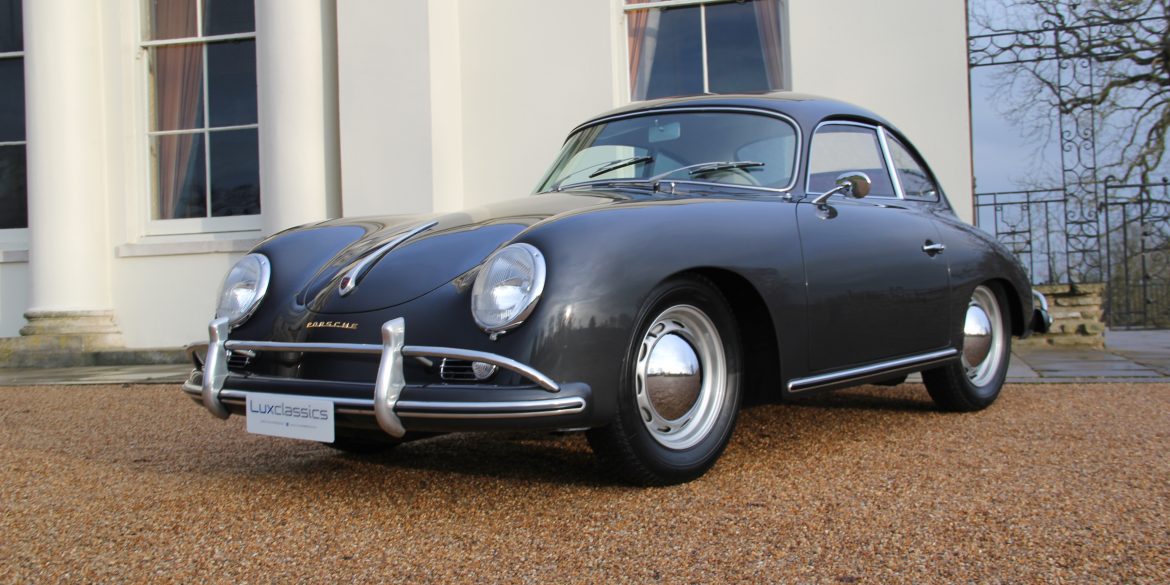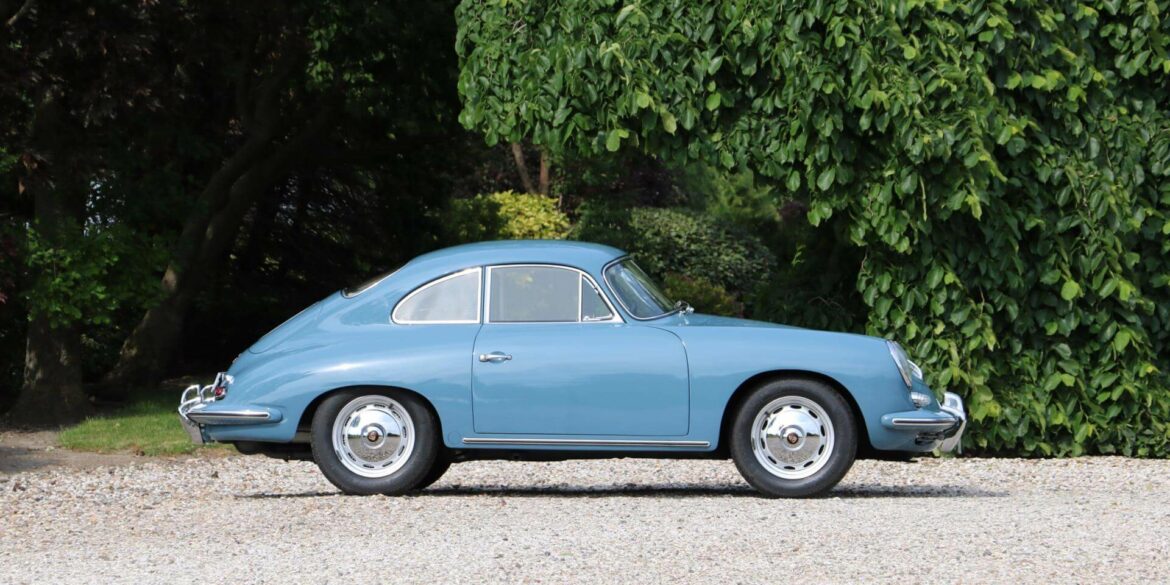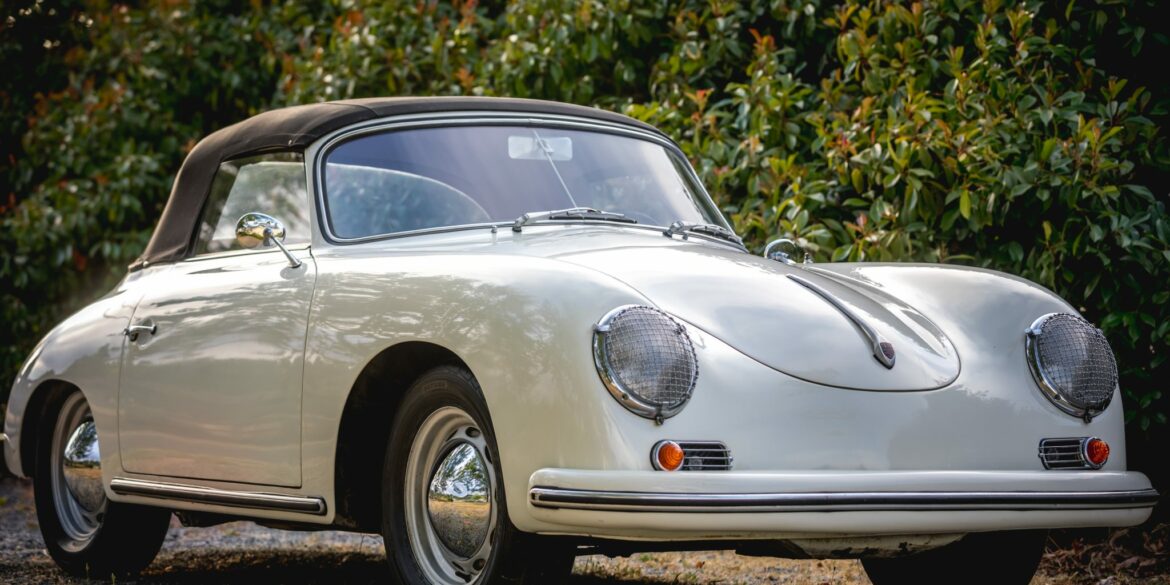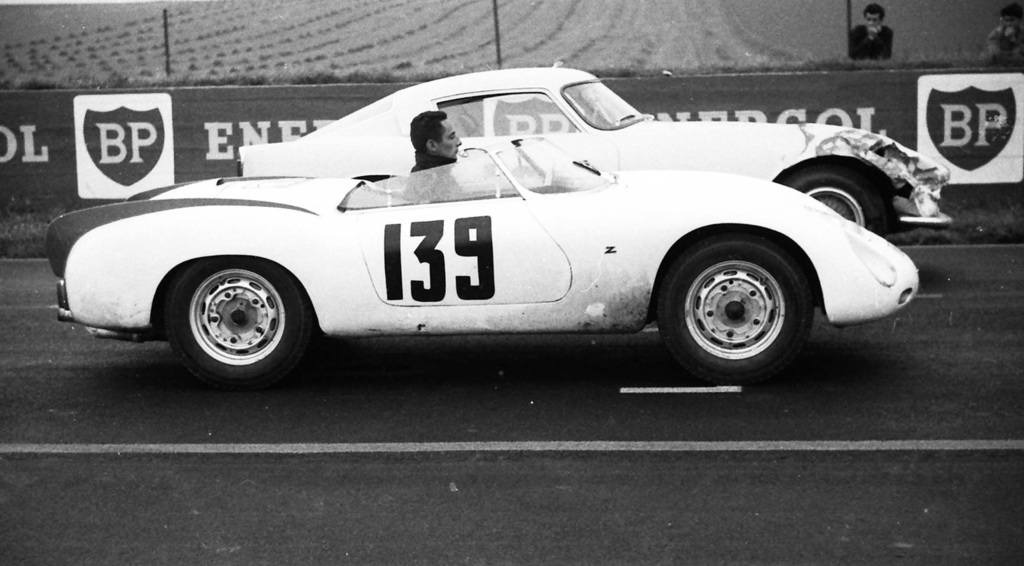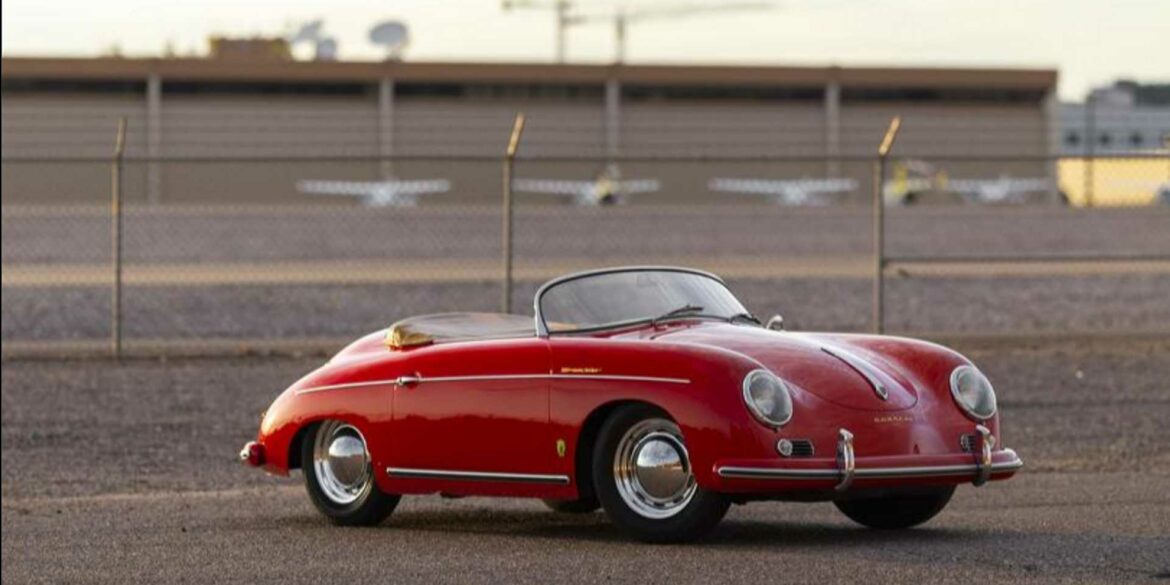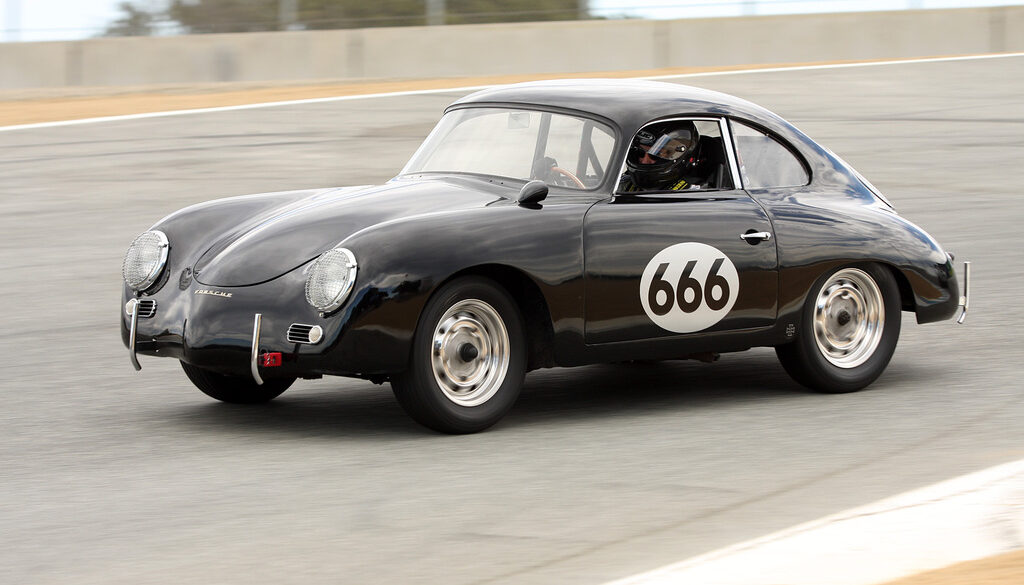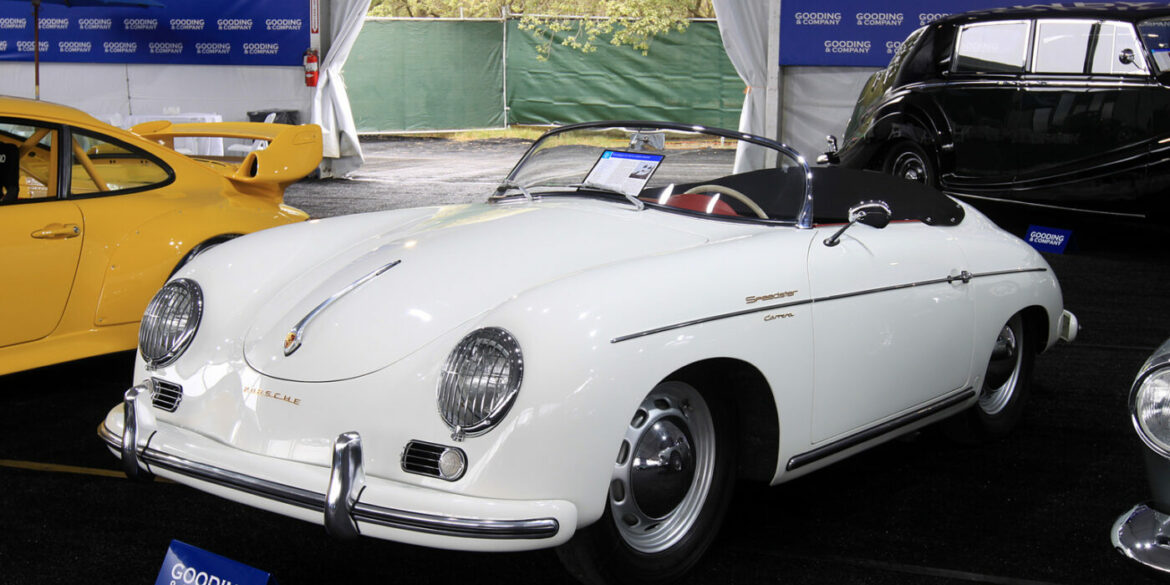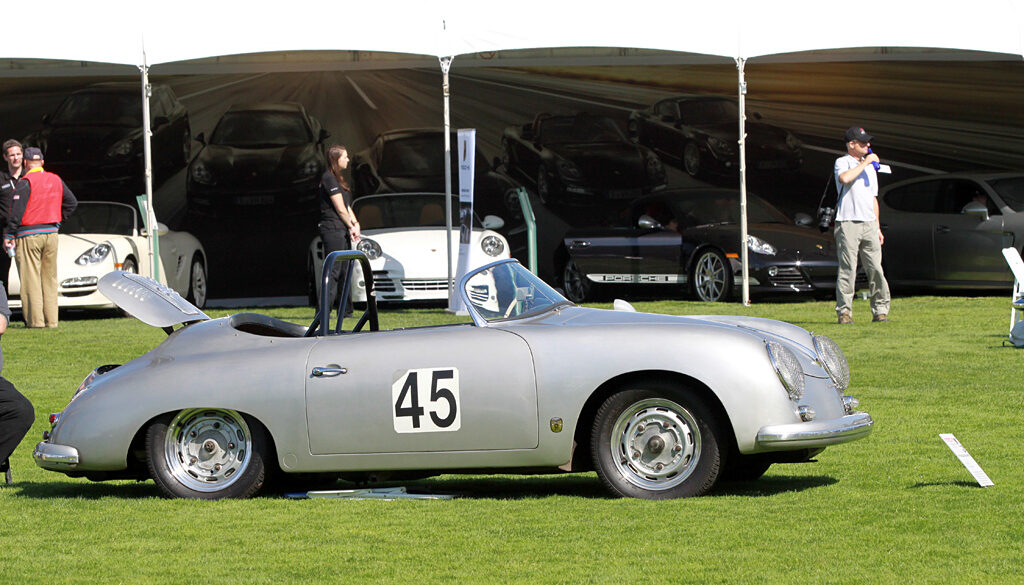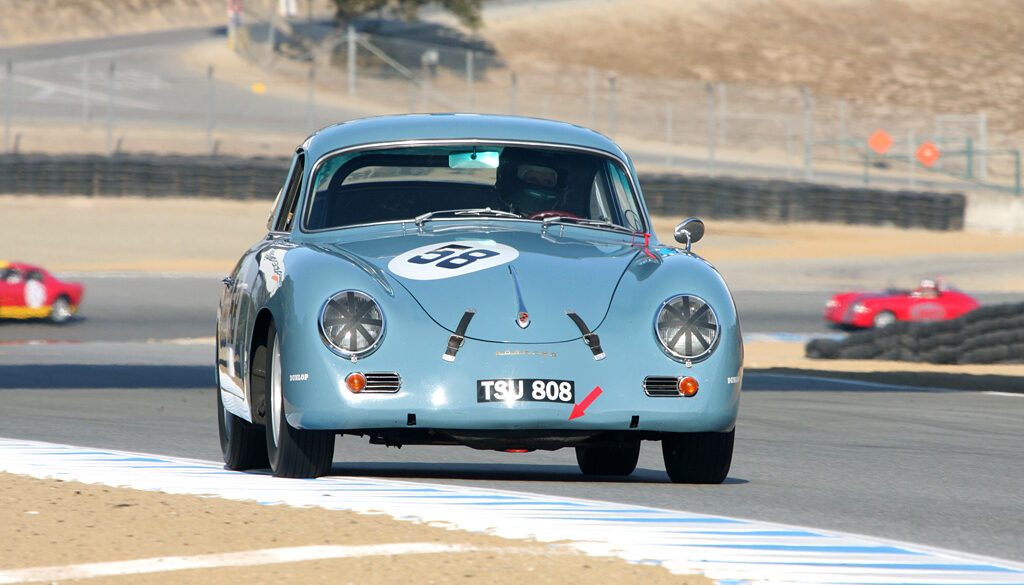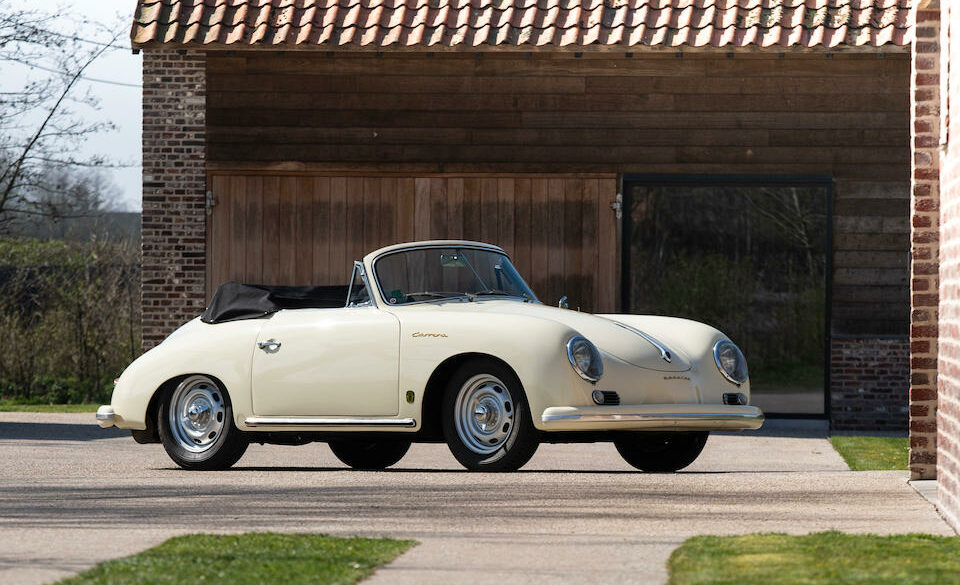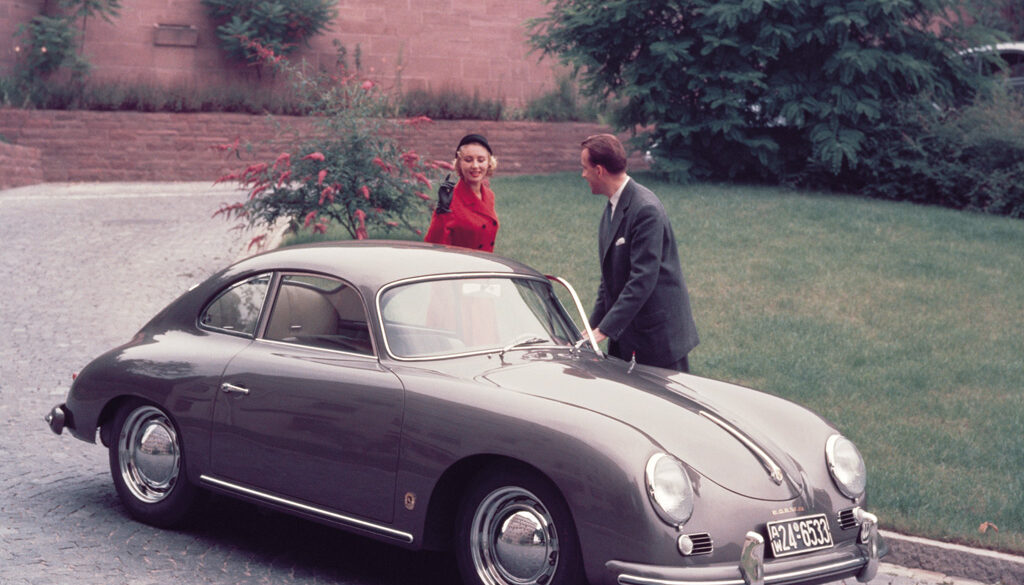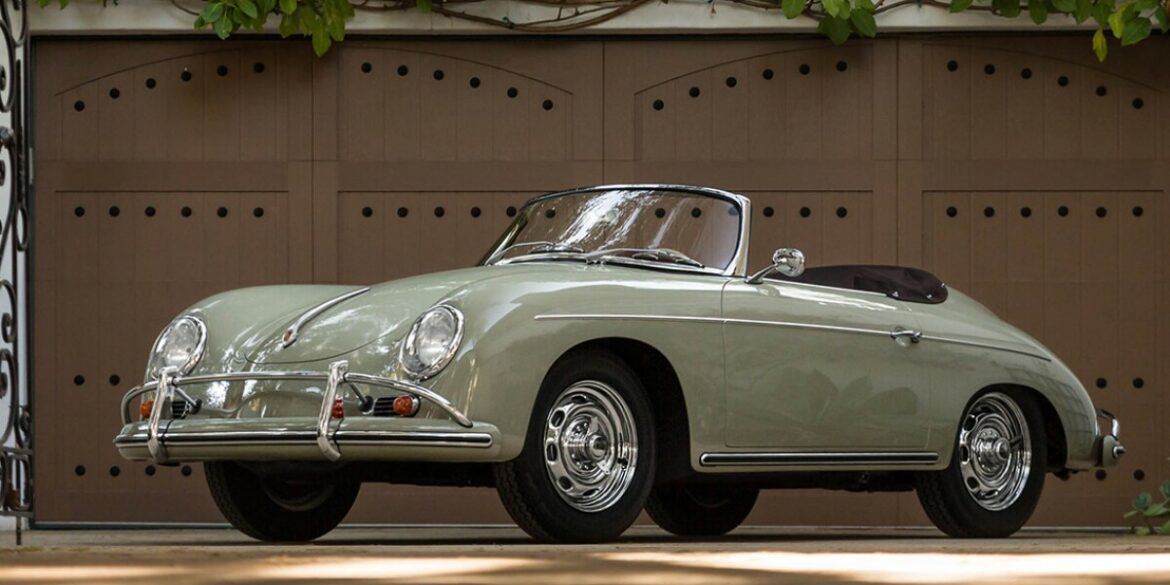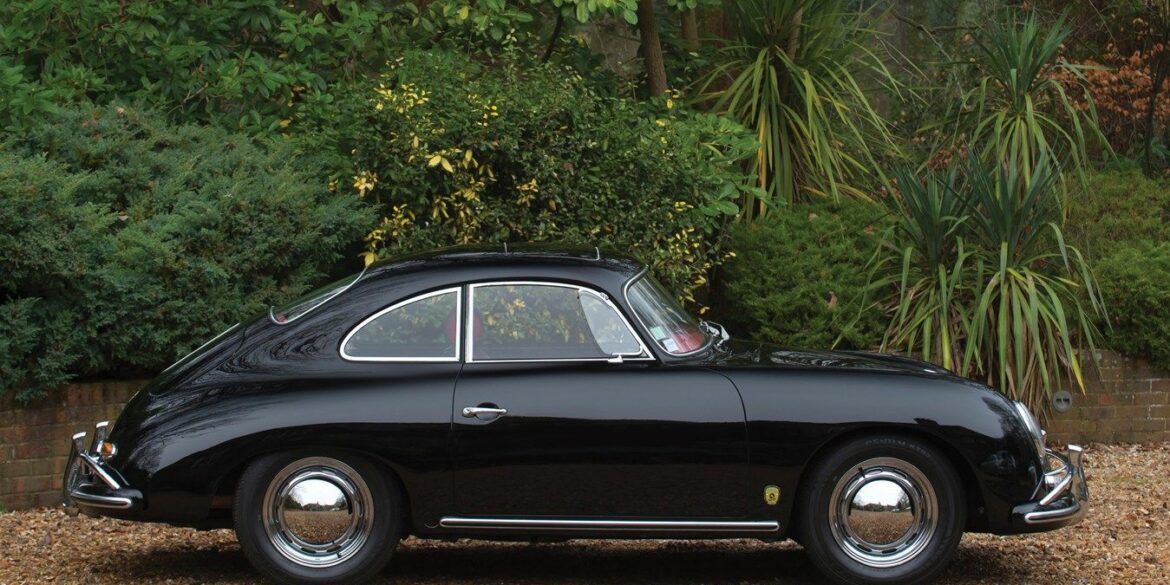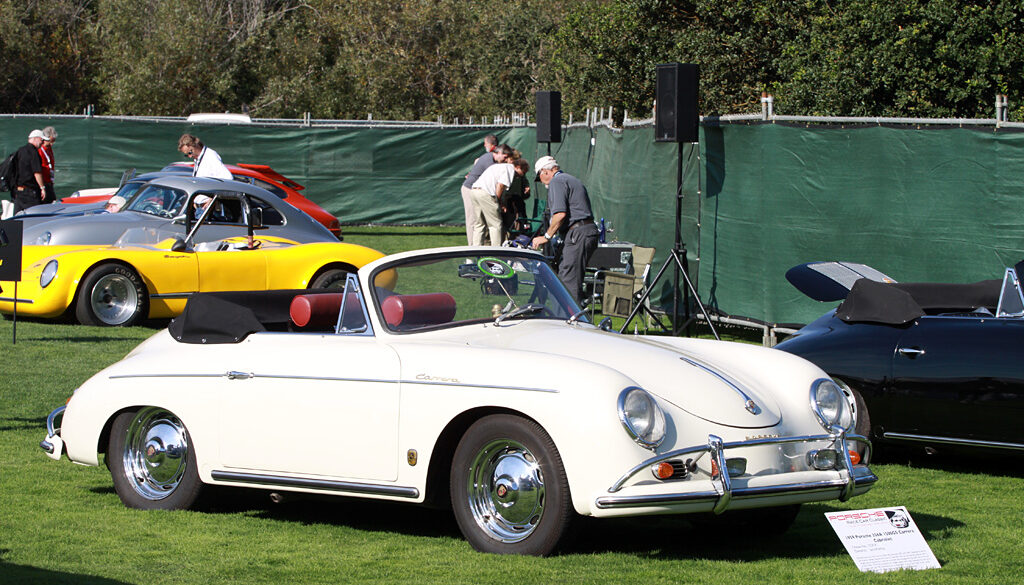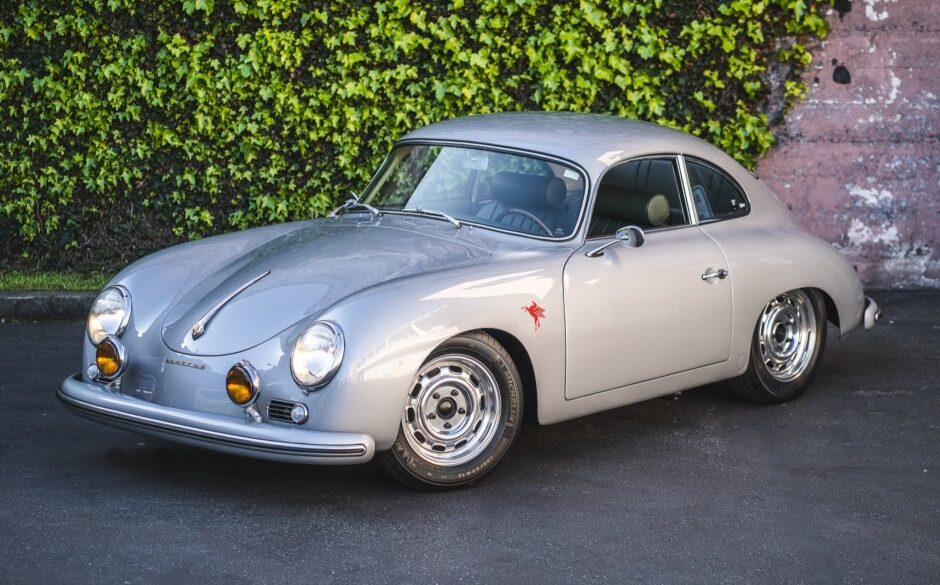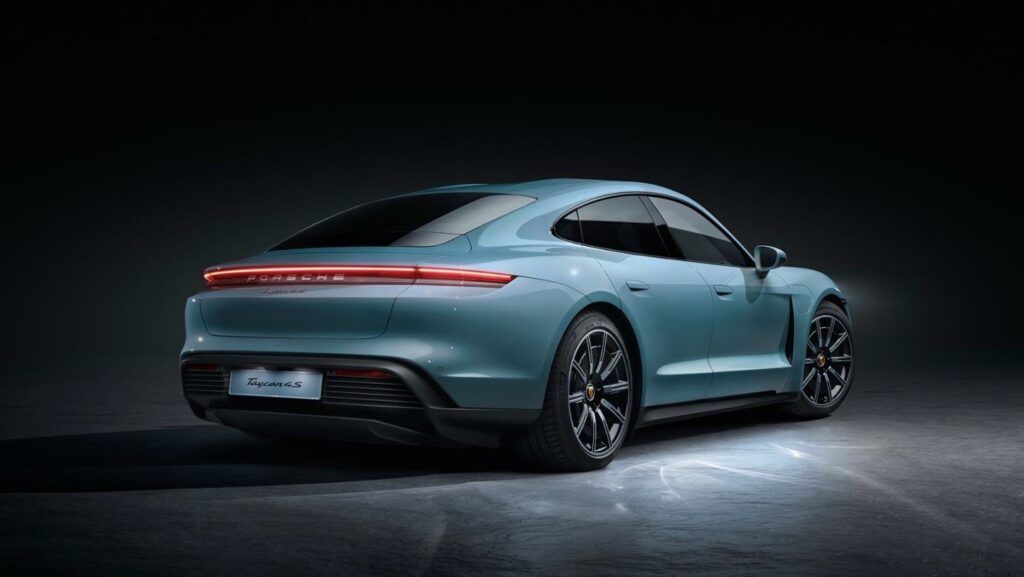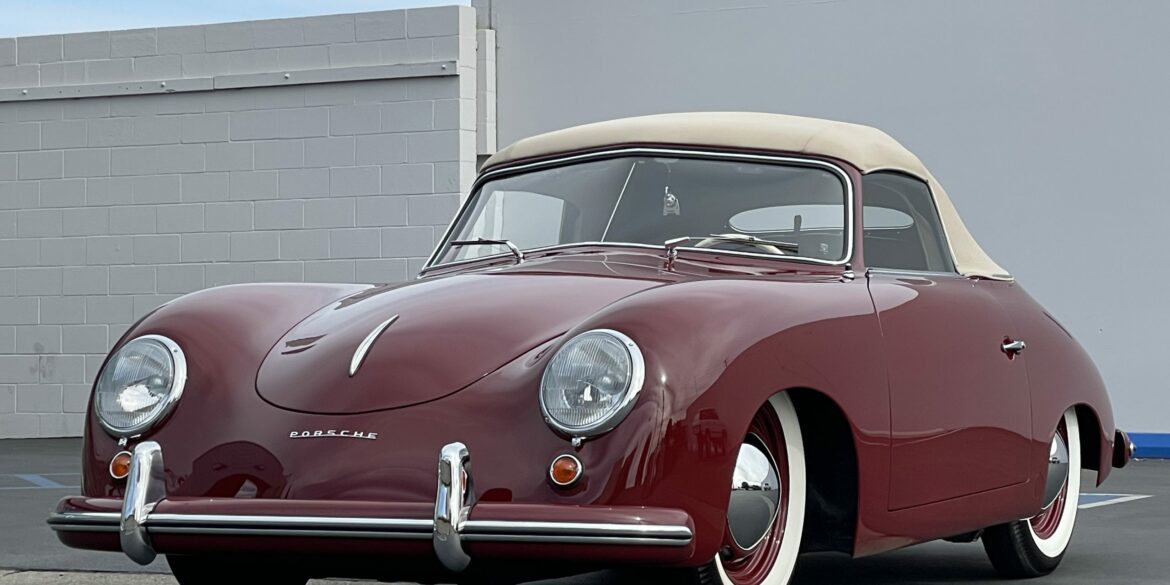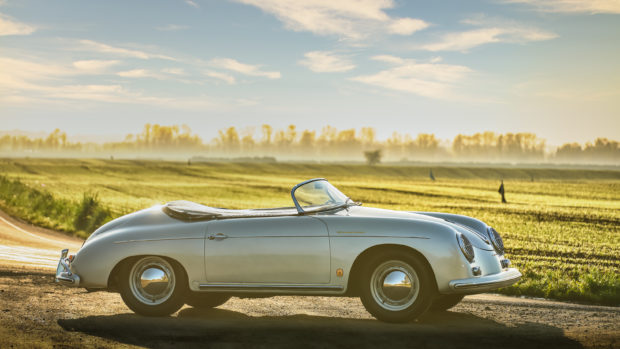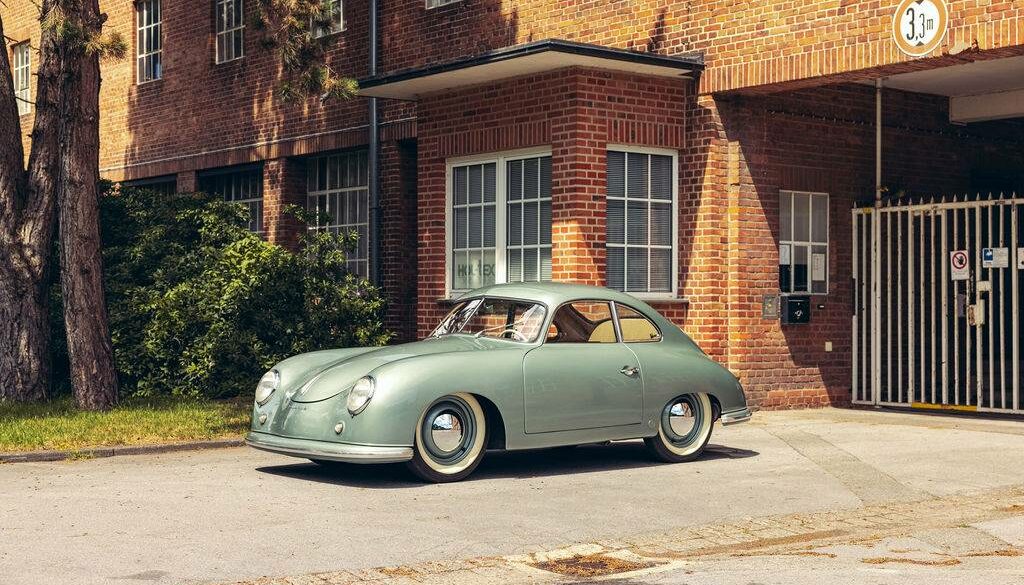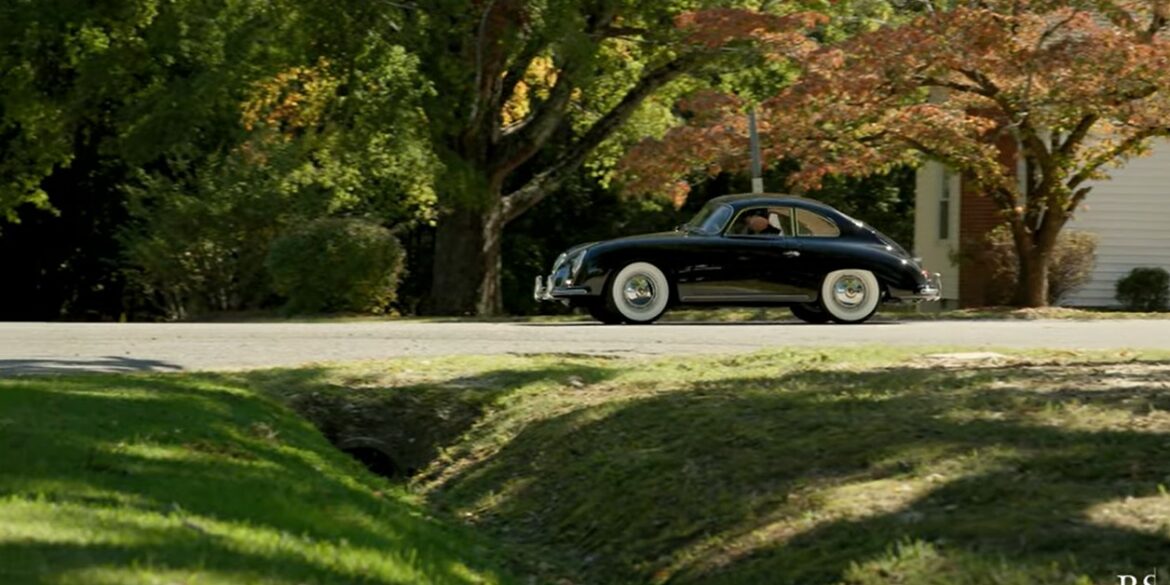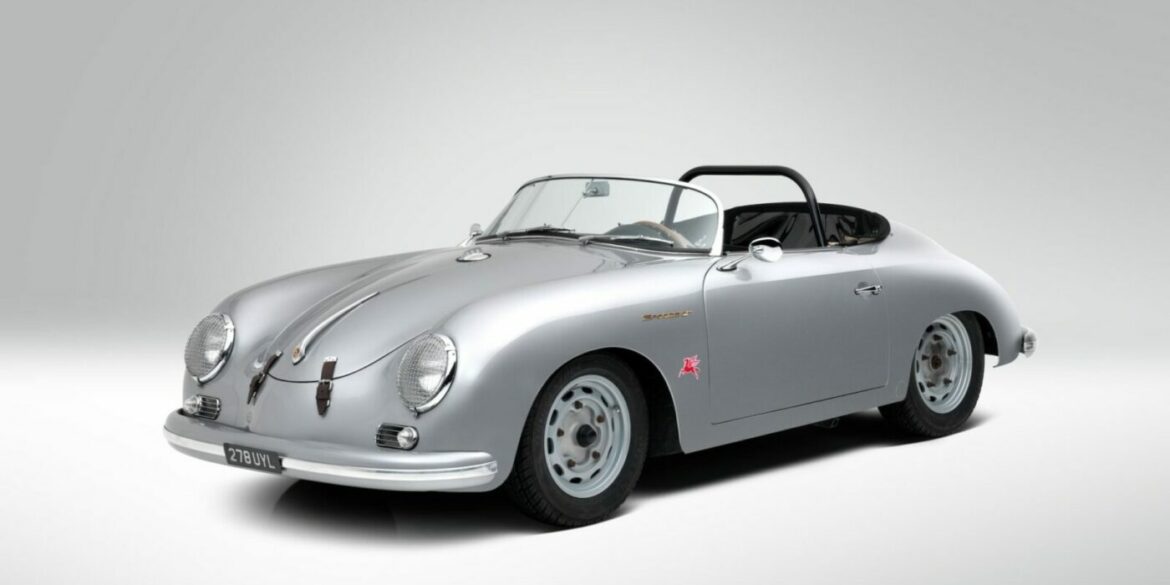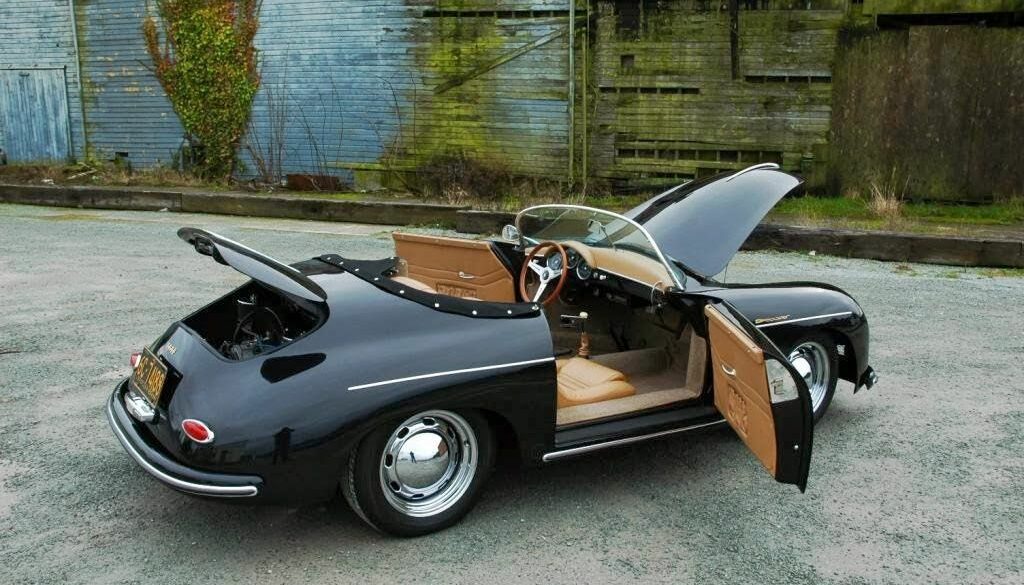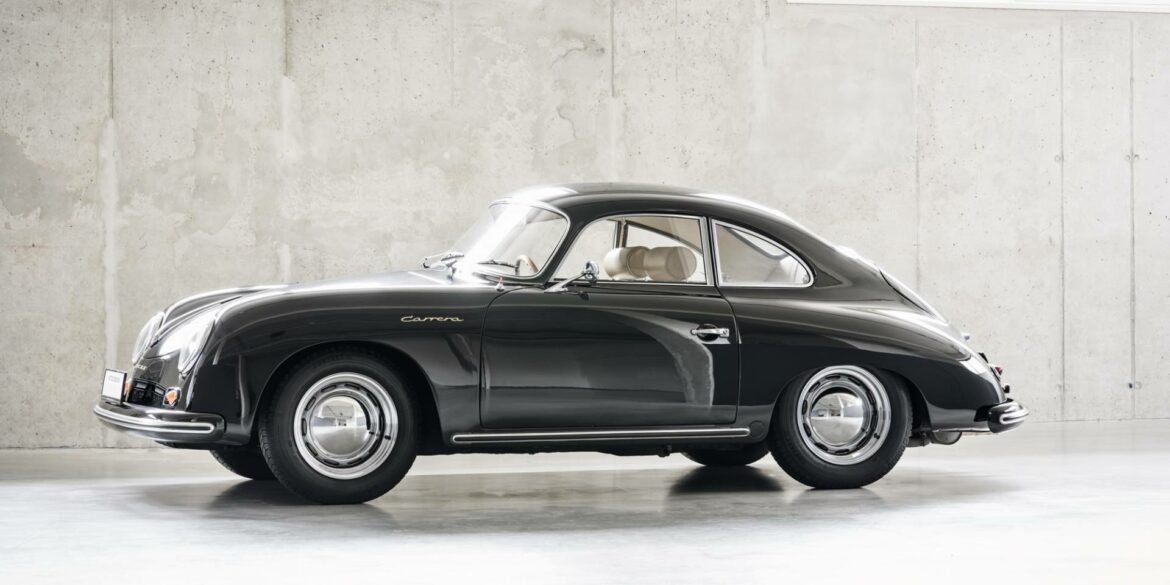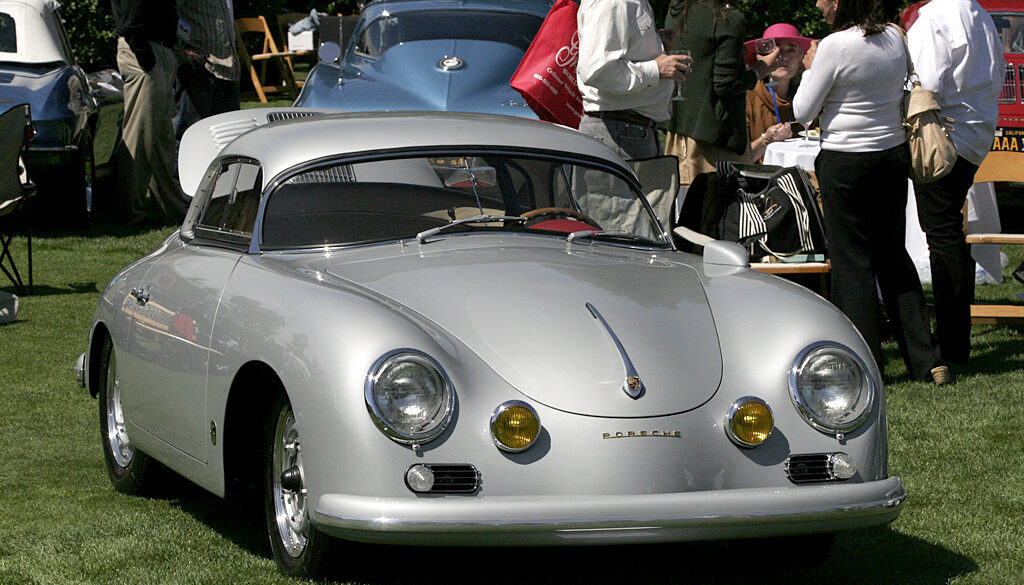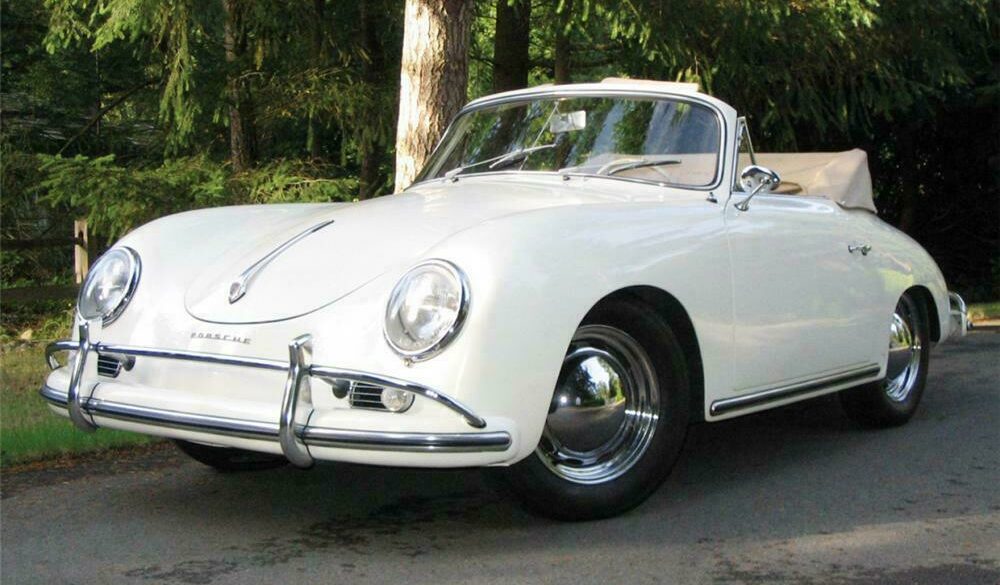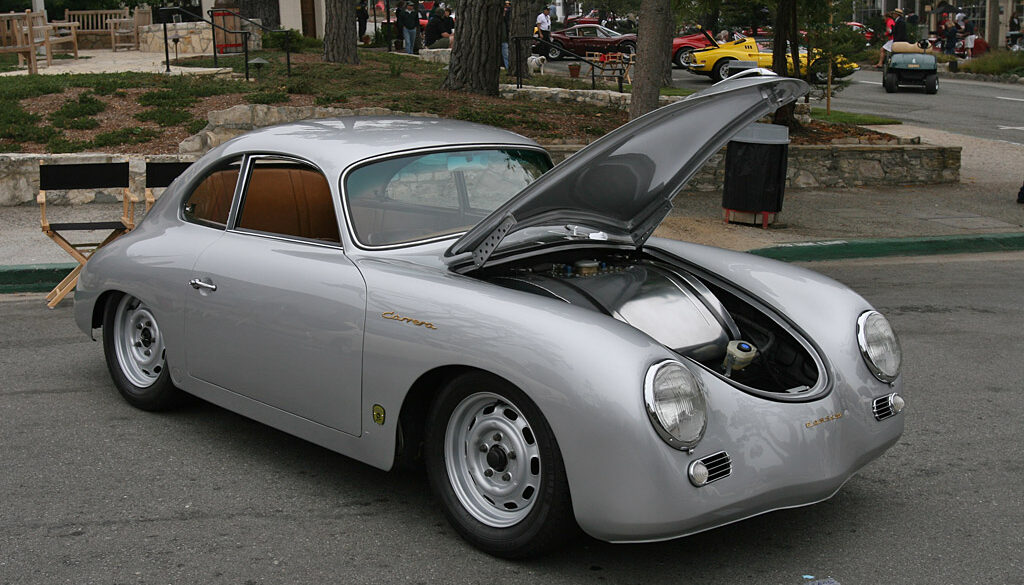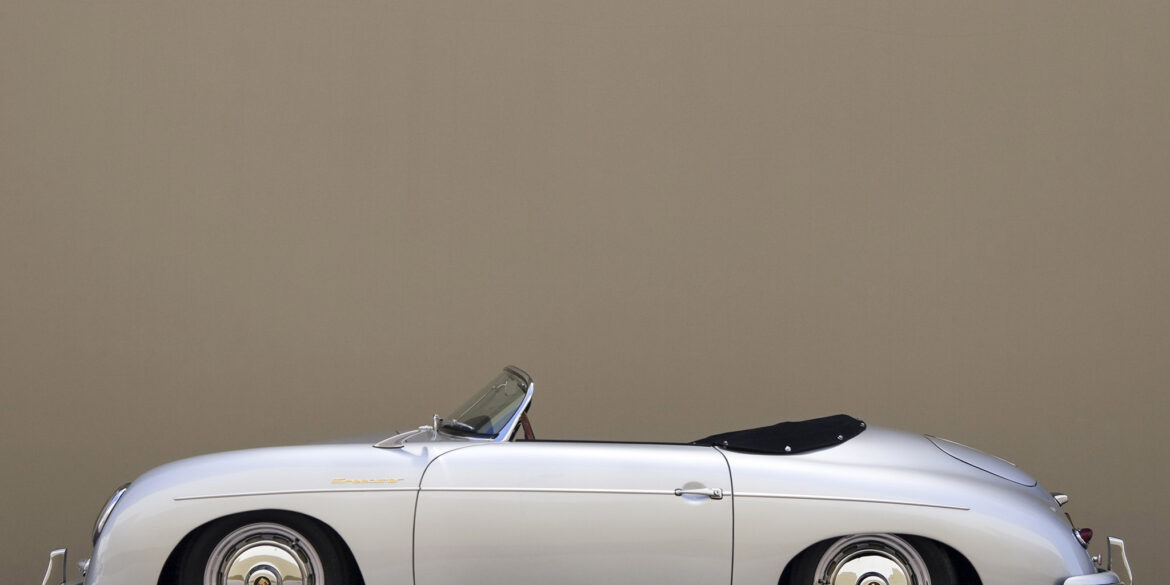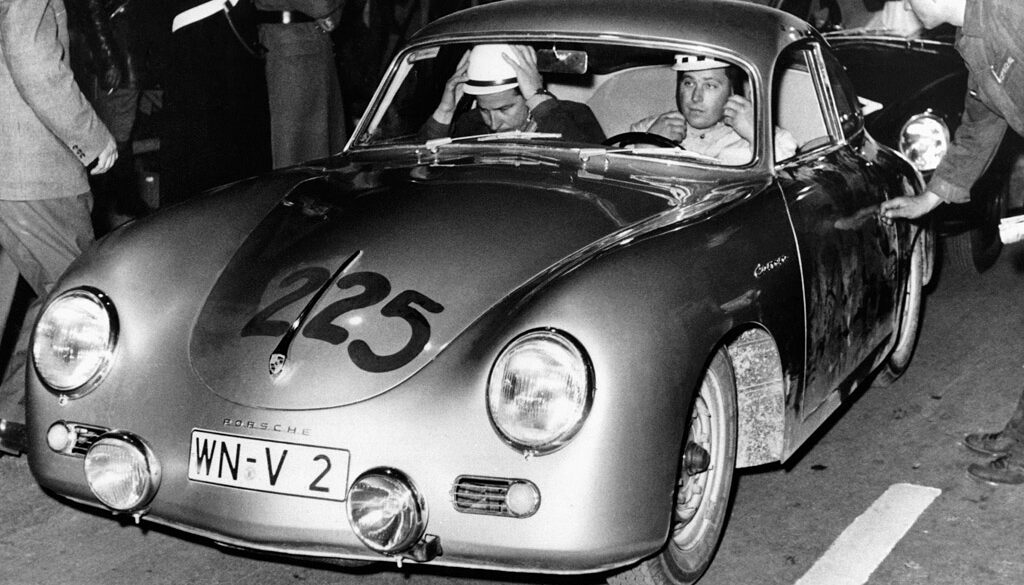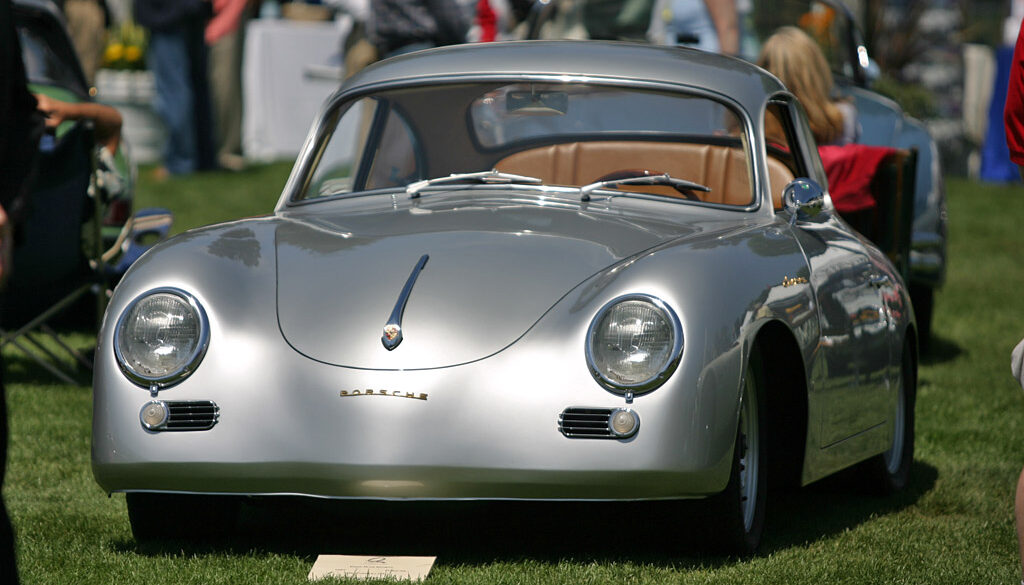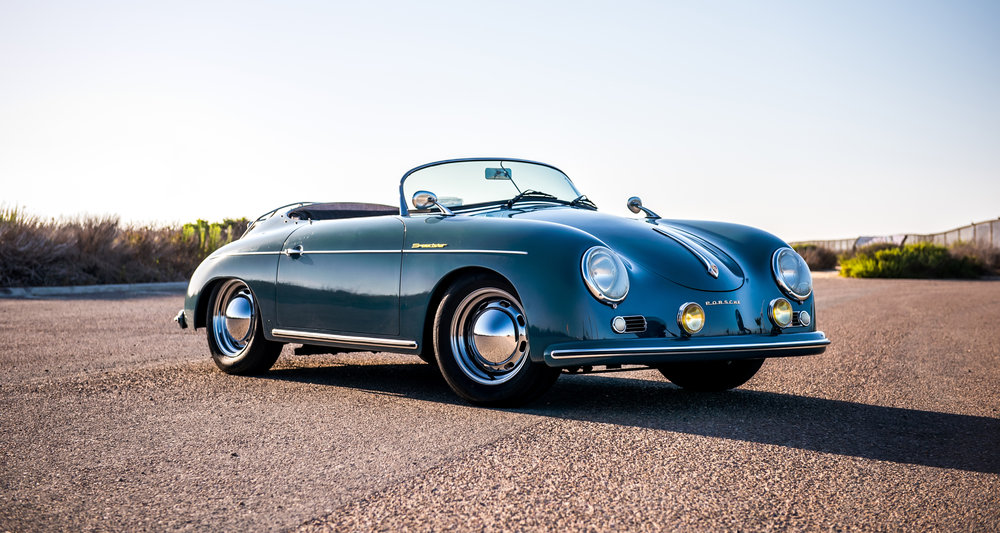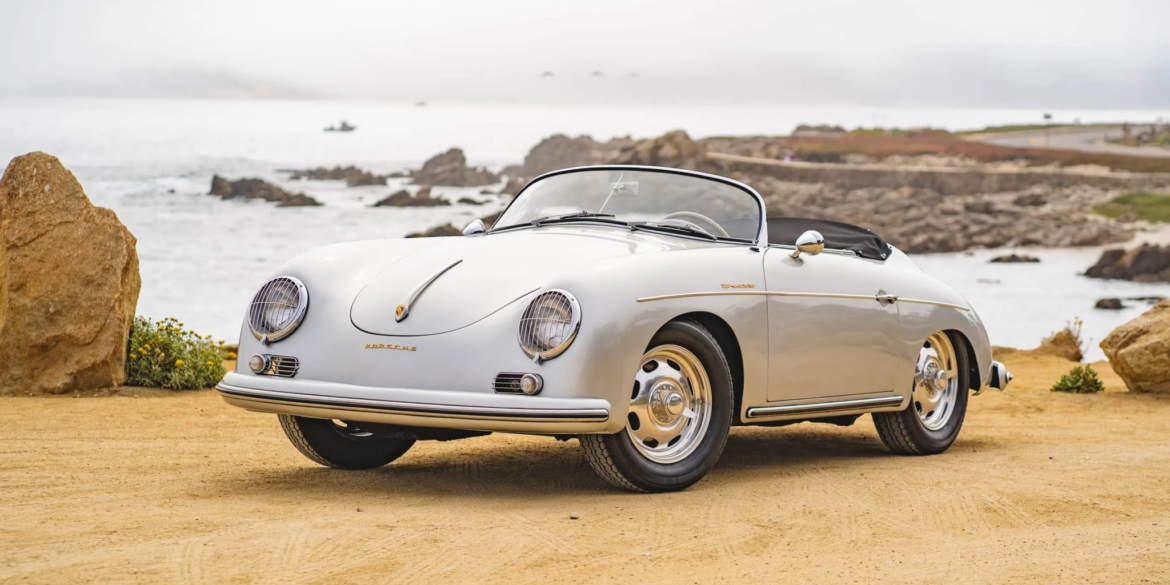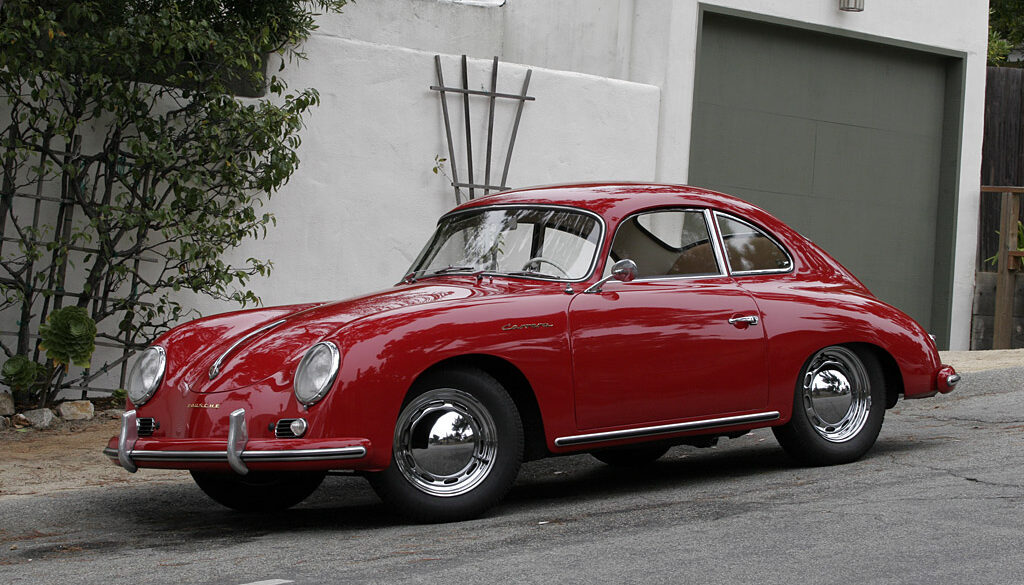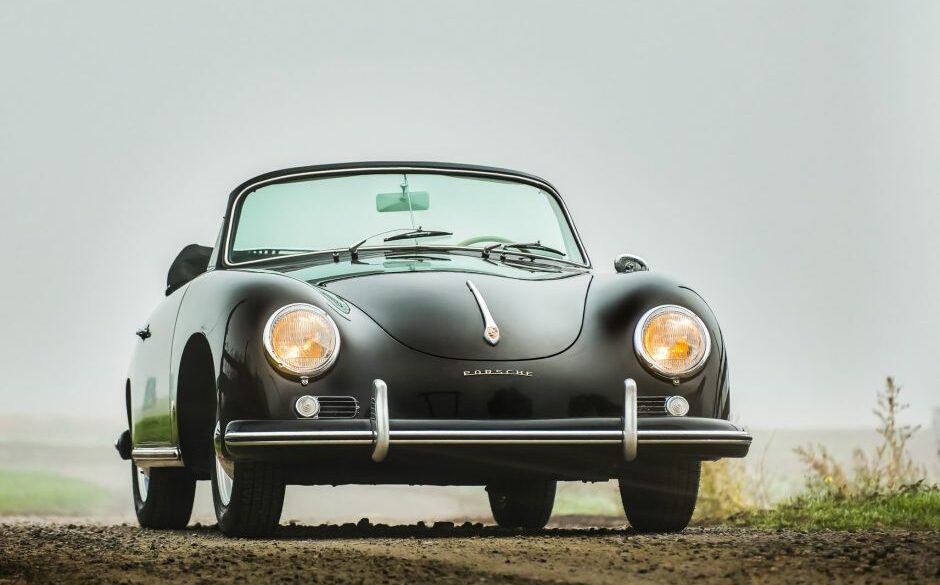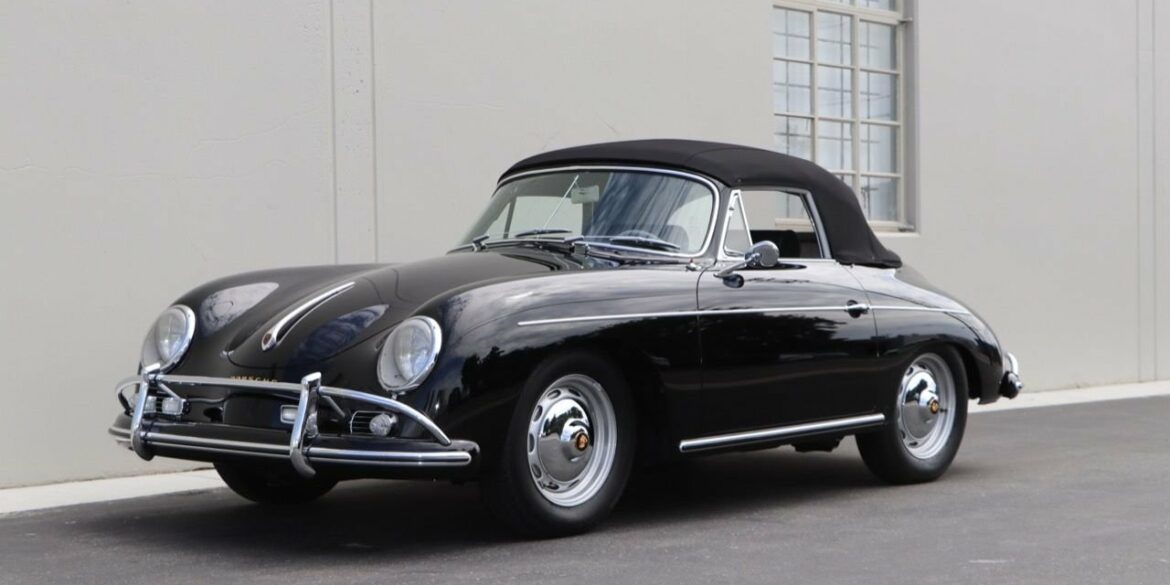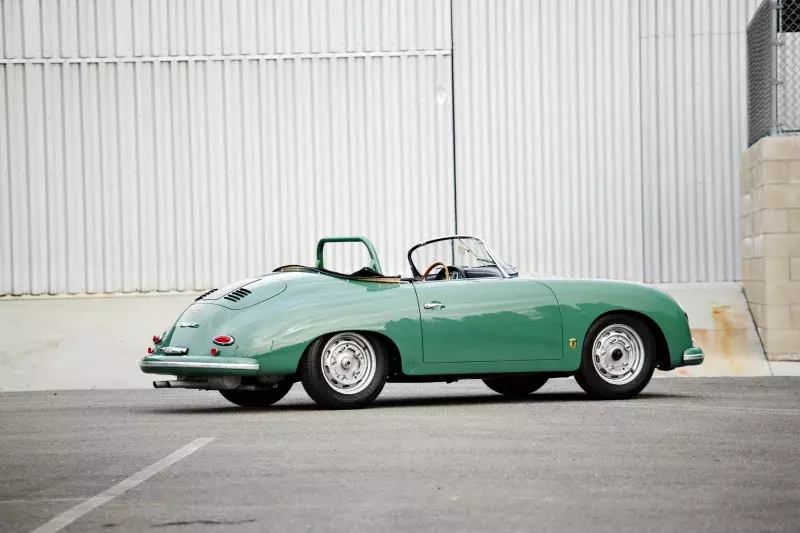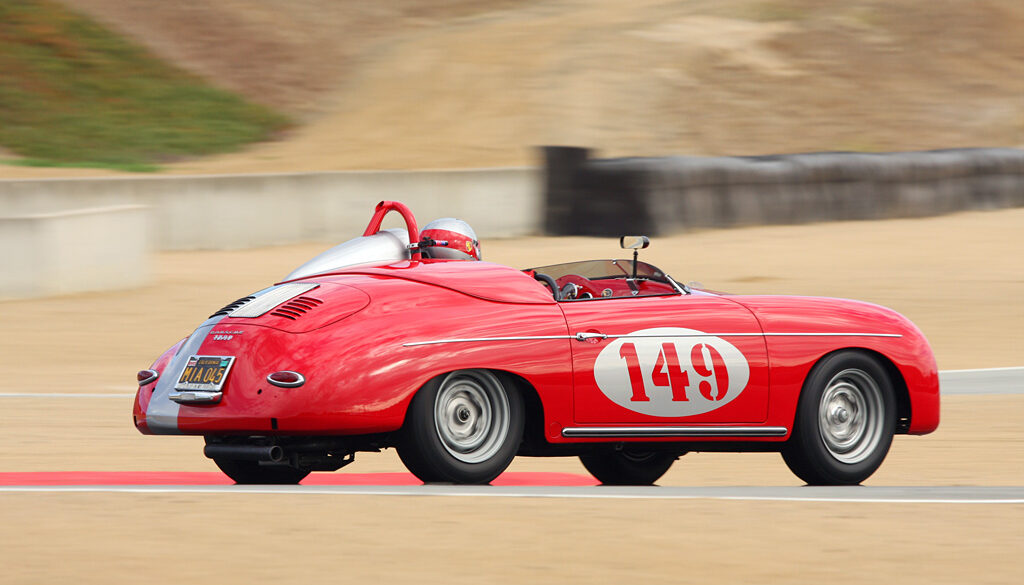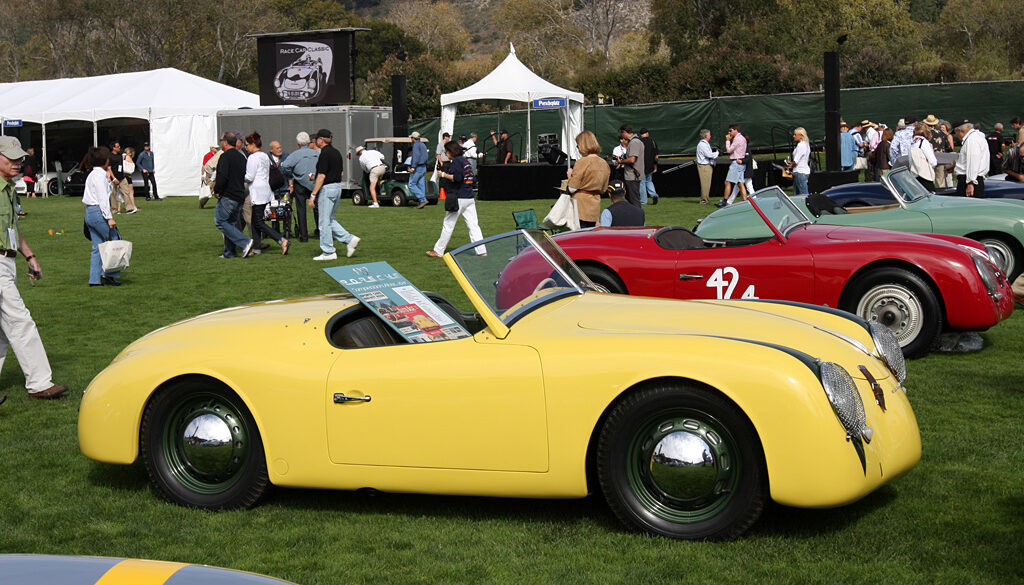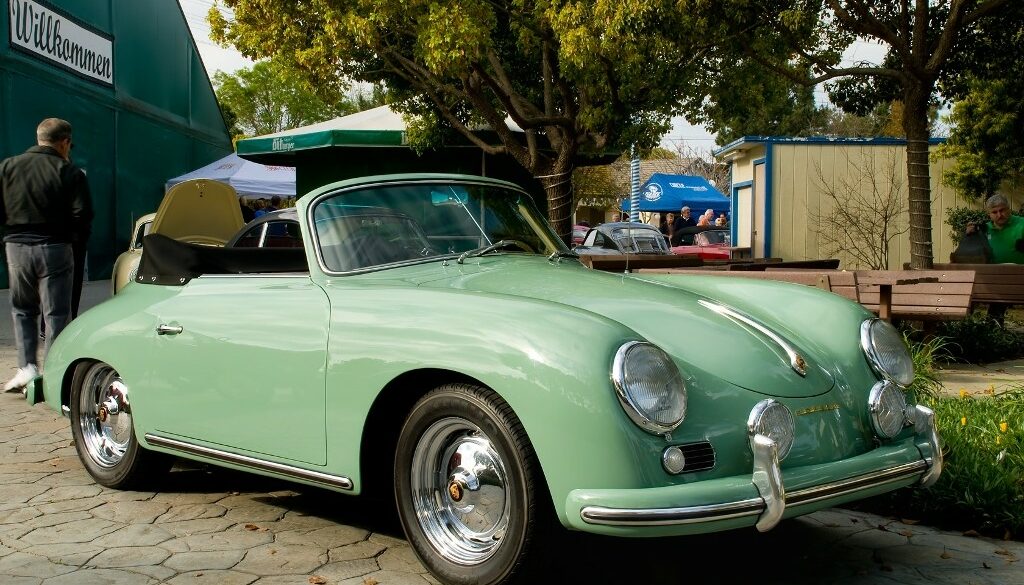From the outside, the 356A kept to the Porsche mantra of stepwise evolution. The new model was outwardly identical to the previous version except for the wider tires, a small rub-strip below the doors, a fully-curved front window and enamel paint replacing lacquer previously used. The 356 A came with an all-alloy air-cooled Flat 4 engine in four states of tune, with the 1300 having Type 589/2 engine with 60 bhp and 65 lb-ft of torque.
1956 – 1957 Porsche 356A/1300 Super Coupe Pictures & Gallery...
1956 – 1957 Porsche 356A/1300 Super Cabriolet Pictures & Gallery...
The original Porsche Carrera Zagato Speedster, the first Zagato bodied Porsche of the brand’s history, was built in 1958 for French gentleman driver and expert Porsche pilot Claude Storez, one of the best French pilots of that time. He started his career in early 50s and became soon a skilled pilot. In late ’57 he was looking for the “ultimate” 356 for the 1958 races season. He put an order to Porsche AG for a 356 A Speedster (the lightest version available) with a Carrera engine and GS specs (the most powerful at that time).
1956 – 1957 Porsche 356A/1300 Super Speedster Pictures & Gallery...
1956 – 1959 Porsche 356A/1600 Coupe Pictures & Gallery...
1956 – 1958 Porsche 356A/1500GS Carrera Speedster Pictures & Gallery...
1958 – 1959 Porsche 356A/1600 Super GT Speedster Pictures & Gallery...
1958 – 1959 Porsche 356A/1600GS Carrera GT Coupé Pictures & Gallery...
Of all the Carreras, the 1959 de Luxe was best suited for the road. Not only was it the most luxurious 356, but it was also was the only year to get the large 1600cc 4-cam engine. The Type 692/2 engine was a much different engine than the 1500cc unit it replaced. The newer unit used plain main bearings instead of roller bearings. Furthermore, the distributors were moved to the end of the crankshaft and the engine shroud was better attached to the 356A body. With twin Solex carburetors, the somewhat detuned version offered 105 bhp @ 6500 rpm.
Despite looking outwardly similar to the preceding models, Porsche thoroughly updated their 356 line in 1956 and called their new model the 356A. At the core, this included a larger 1600 cc engine, but also a curved-glass windshield and a thoroughly revised suspension. At the 1955 Frankfurt Motor Show in September of 1955, Porsche released the 356A/1600 to the world with cabriolet, coupe and speedster bodies from Reutter. Produced in 1959 only, the Porsche 356 Convertible D was the replacement for the 356 A Speedster, which was discontinued after 1958.
1959 Porsche 356A/1600 Super Convertible D Pictures & Gallery...
1956 – 1959 Porsche 356A/1600 Super Coupe Pictures & Gallery ...
1956 – 1959 Porsche 356A/1500GS Carrera Cabriolet Pictures & Gallery...
From the outside, the 356A kept to the Porsche mantra of stepwise evolution. The new model was outwardly identical to the previous version except for the wider tires, a small rub-strip below the doors, a fully-curved front window and enamel paint replacing lacquer previously used. The 356 A came with an all-alloy air-cooled Flat 4 engine in four states of tune, with the 1300 having Type 506/2 engine with 44 bhp and 60 lb-ft.
One of the Best ‘Outlaws’ on the Planet Emory Motorsports is a company that makes the best Porsche “Outlaw” cars. The attention to detail is stunning and there are few more beautiful machines to exist. Now there is a 1959 Porsche 356A sunroof coupe for sale on Bring a Trailer....
1956 – 1957 Porsche 356A/1300 Cabriolet Pictures & Gallery...
A True Porsche Specimen The Porsche 356A Speedster is a beautiful car and an important part of Porsche’s long motoring history. There’s a 1958 version of the car for sale at Bring A Trailer right now. The current bid is at $205,000 and the auction ends in seven days. If...
1956 – 1957 Porsche 356A/1300 Coupe Pictures & Gallery...
Join Road Scholars’ Cam Ingram and Udo Reisinger as they take the 1958 Porsche 356A Coupe on its final post restoration test drive....
Despite looking outwardly similar to the preceding models, Porsche thoroughly updated their 356 line in 1956 and called their new model the 356A. At the core, this included a larger 1600 cc engine, but also a curved-glass windshield and a thoroughly revised suspension. At the 1955 Frankfurt Motor Show in September of 1955, Porsche released the 356A/1600 to the world with cabriolet, coupe and speedster bodies from Reutter. The 356A/1600 was a great performer, good for a sprint to 60 mph in 13.5 seconds and hit a top speed of 109 mph.
1956 – 1957 Porsche 356A/1300 Speedster Pictures & Gallery...
Available in all body styles, the Porsche 356 A Carrera featured the race car-derived 1500 cc four-cam engine (type 547) developed for the Porsche 550 Spyder. Rated up to 110 hp, it was the top performance 356 A model available. Variants included the Carrera 1500GS and Carrera 1500GT, differentiated by their horsepower. In 1958, Porsche updated the Carrera engines (now type 692), increasing the displacement up to 1600 cc and output increased to 105 and 110 hp respectively. In 1959 horsepower for the GT increased again to 115.
A handful of push-rod 356As were delivered from the factory with a lightweight package that was usually reserved for the Carrera race cars. Called GTs, these got the stripped out interior, aluminum doors, a large fuel tank and Porsche ATE disc brakes. As few as four Speedsters came equipped this way. Since the four-cam was only a marginal improvement in power, the regular 1600 Super was more than enough for the small car.
1959 Porsche 356A/1600GS Carrera de Luxe Cabriolet Pictures & Gallery...
1957 – 1958 Porsche 356A/1500GS Carrera GT Coupé Pictures & Gallery...
1956 – 1958 Porsche 356A/1600 Speedster Pictures & Gallery ...
1952 Porsche 356 ‘America Roadster’ Pictures & Gallery...
1959 Porsche 356A/1600GS Carrera de Luxe Coupé Pictures & Gallery...
In May of 1957, Porsche offered two distinct versions of the Carrera, one called the de Luxe for the street and this model, the Gran Turismo, for the track. The main difference between the two models was weight. The Carrera GT was a purpose-built car with little on board amenities. For instance, no heater was fitted giving the car its 'icebox' nickname. Furthermore, the interior was stripped of sound deadening, side windows were replaced by pull-up Perspex units and only simple door panels were fitted.
Following the Pre-A prototypes and a run of quad-cams with the 1500cc engine, the 1600 Carrera GT was a performance 356 that used a larger version of the Porsche 550 Spyder's potent engine. As early as 1958, some Carreras were fitted with a larger engine known as the Type 692. The new unit featured a larger displacement which was better suited for the 1600cc class. Furthermore, it was improved considerably adopting plain bearings and new ignition system.
1956 – 1959 Porsche 356A/1600 Super Speedster Pictures & Gallery...
The Porsche 356A Speedster is a beautiful car and an important part of Porsche’s long motoring history. There’s a 1958 version of the car for sale at Bring A Trailer right now. This Porsche has remained under the ownership of a single family from 1967 to 2022 and joined the 1987 La Carrera...
1956 – 1959 Porsche 356A/1500GS Carrera Coupe Pictures & Gallery...
An Automotive Icon One of the most iconic Porsches of all time is the 356A Cabriolet and now you have a chance to own one if you want it bad enough. The 356A Cabriolet you see here is currently for sale at Bring A Trailer. The car is a 1958...
1956 – 1959 Porsche 356A/1600 Super Cabriolet Pictures & Gallery ...
1957 – 1958 Porsche 356A/1500GS Carrera GT Speedster Pictures & Gallery...
1959 Porsche 356A/1600 Convertible D Pictures & Gallery...
This isn't technically a Speedster, but the Type 540 (Typ 540 K/9-1 to be very precise) - known more commonly as the America Roadster - started the idea. The American Roadster was the direct predecessor of the Speedster. U.S. importer Max Hoffman convinced Porsche it needed a lightweight convertible to compete. It only had an emergency folding roof and could keep up with larger sports cars of the era. But the production methods used to create the America Roadster’s aluminum body proved to be too expensive, and in 1952 Porsche built only 21 units before its discontinuation in 1953.
1956 – 1959 Porsche 356A/1600 Cabriolet Pictures & Gallery...


